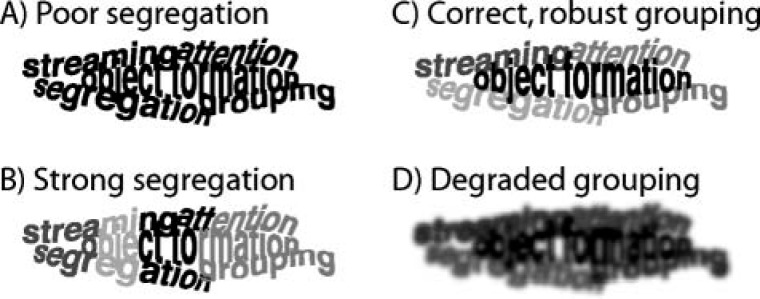Figure 2.

Illustration of how object formation affects selective attention. (A) When all letters are of the same color, the natural way of perceiving the scene is as one object; individual words are difficult to analyze. (B) If colors/intensities of letters differ, different color groups tend to be perceived together. Because the color groups are not word groups, this perceptual organization interferes with processing the individual words. (C) When the colors/intensities of the letters making up each word are distinct, it is easier to attend to each in turn, making understanding more automatic and rapid. (D) If the peripheral representation of the input is less clear and the colors/intensities less distinct from one another (as in a listener with hearing loss), grouping of the letters making up a word is less automatic (as when there are no differences, as in A) and harder to process.
